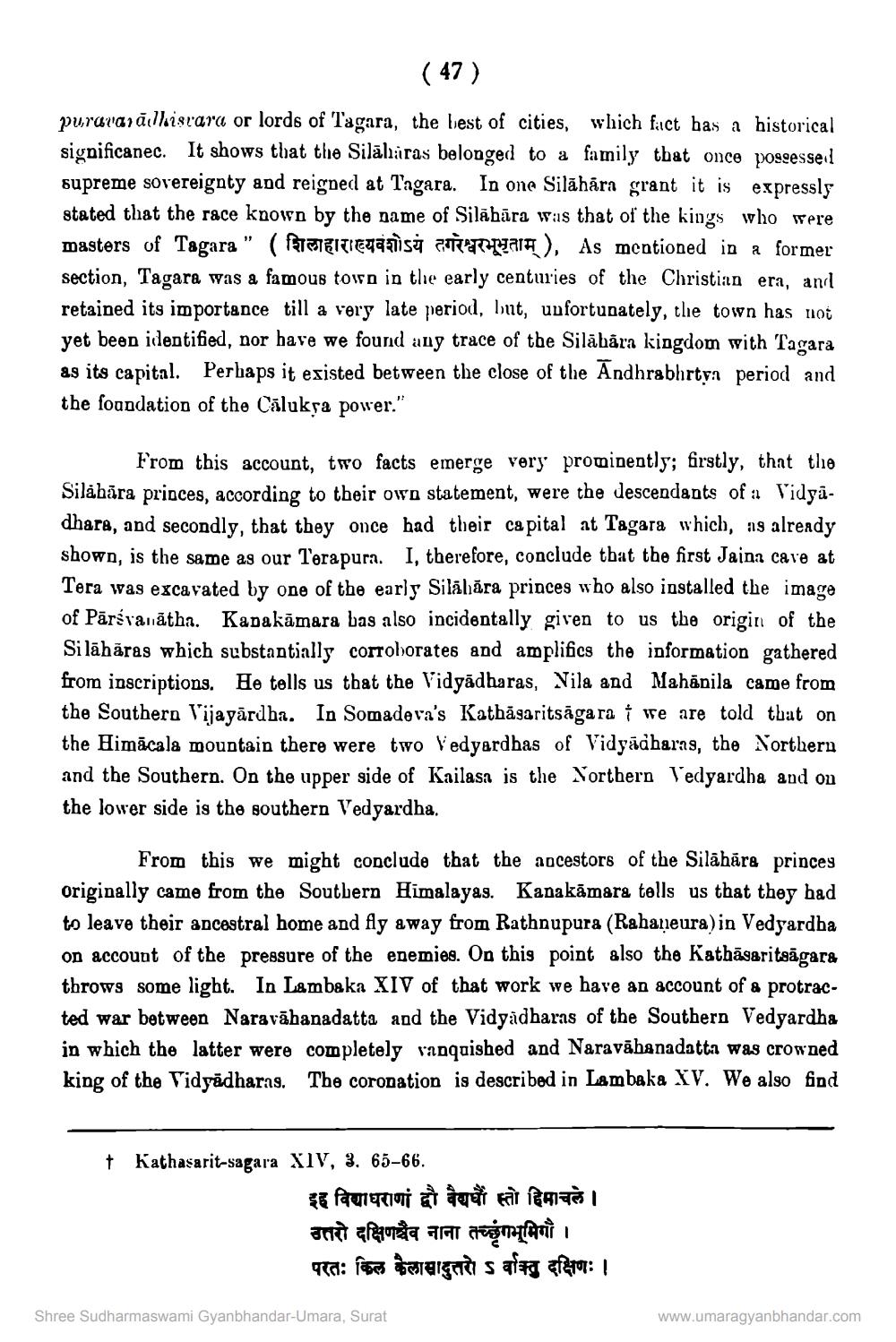________________
( 47 )
puraraiāllistara or lords of Tagara, the best of cities, which fact has a historical significanec. It shows that the Silāliras belonged to a family that once possesseil supreme sovereignty and reigned at Tagara. In one Silāhāra grant it is expressly stated that the race known by the name of Silābāra was that of the kings who were masters of Tagara " ( TOTEITIETalsi
G a ra ), As mentioned in a former section, Tagara was a famous town in the early centuries of the Christian era, anni retained its importance till a very late period, but, unfortunately, the town has not yet been identified, nor have we found any trace of the Silābāra kingdom with Tagara as its capital. Perbaps it existed between the close of the Andhrabhrtyn period and the foundation of the Călukça power."
From this account, two facts emerge very prominently; firstly, that the Silabāra princes, according to their own statement, were the descendants of a Vidyadhare, and secondly, that they once had their capital at Tagara which, as already shown, is the same as our Terapura. I, therefore, conclude that the first Jaina cave at Tera was excavated by one of the early Silāhāra princes who also installed the image of Pārsvanatha. Kapakāmara bas also incidentally given to us the origin of the Silāhāras which substantially corroborates and amplifics the information gathered from inscriptions. He tells us that the Vidyādharas, Nila and Mahānils came from the Southern Vijayārdha. In Somadera's Kathāgaritsāgara † we are told that on the Himācala mountain there were two Fedyard has of Vidyadharas, the Northern and the Southern. On the upper side of Kailasa is the Northern Vedyardha and ou the lower side is the southern Vedyardha.
From this we might conclude that the ancestors of the Silāhāra princes originally came from the Soutbern Himalayas. Kanakāmara tells us that they had to leave their ancestral home and fly away from Rathnupura (Rabaneura) in Vedyardba on account of the pressure of the enemies. On this point also the Kathāsaritsāgara throws some light. In Lambaka XIV of that work we have an account of a protracted war between Naravābanadatta and the Vidyadharas of the Southern Vedyardha in which the latter were completely vanquished and Naravăbanadatta was crowned king of the Vidyādharns. The coronation is described in Lambaka XV. We also find
† Kathasarit-sagara XIV, 3. 65-66.
इह विद्याधराणां द्वौ वैद्यों स्तो हिमाचले। उत्तरो दक्षिणश्चैव नाना तच्छंगभूमिगौ । परतः किल कैलासादुत्तरोऽक्तुि दक्षिणः ।
Shree Sudharmaswami Gyanbhandar-Umara, Surat
www.umaragyanbhandar.com




